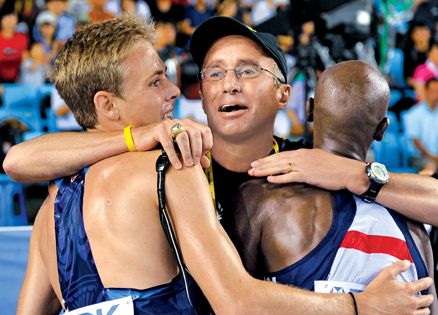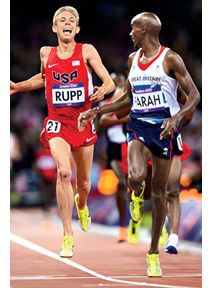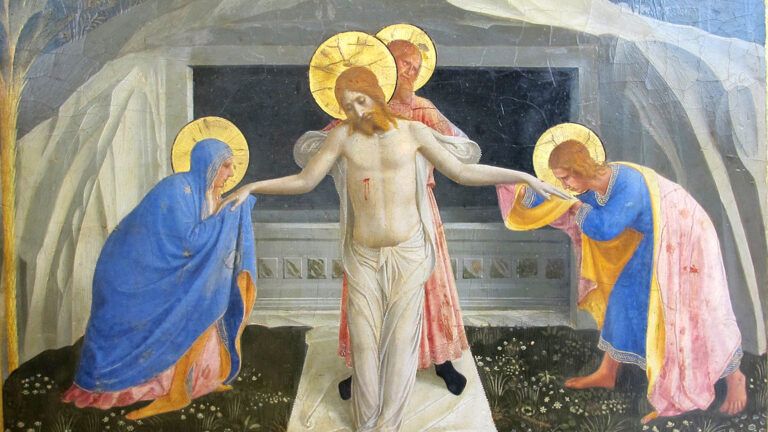Olympic Stadium, London, August 4, 2012. Minutes before the race of my life, the finals of the men’s 10,000 meters. I wasn’t running. I was a spectator. Below, taking their places, were two runners I’d spent years coaching. Many, many hopes rested on those two men.
Mo Farah, a 29-year-old from England, carried his country’s dream of Olympic gold. Galen Rupp, a 26-year-old from Oregon, had a shot at becoming the first American in decades to medal in an Olympic distance event.
Sometimes at big races coaches get to sit close to the runners. Not at these Olympics. I was in the stands like any other fan. Maybe that was better—better that my runners couldn’t see the tension on my face.
For more than a decade I had led a program called the Nike Oregon Project, an attempt to show the world that, with the right training, Westerners could once again compete in world-class distance running. For years Africans had completely dominated the sport.
The stakes were especially high at this Olympics. Doubts about the project ran rampant in the running world. Our runners had failed to finish higher than eighth place in the 2004 and 2008 games. It’s a vanity project, people said, Alberto Salazar trying to redeem himself.
I knew what they meant. I’d won four major marathons in the early 1980s. Then I flamed out and never won another marathon. I never won an Olympic medal.
Were the doubters right? Was I here for the wrong reasons? I certainly had cause to wonder. I’d made so many poor decisions in my life, in my running career. Yet an almost indescribable calm descended over me in that packed stadium in London. The gun sounded. The runners were off.
I couldn’t help but marvel at the peace I felt inside—the complete opposite of how I’d felt in my own running career. Maybe it was the competitive fire I’d inherited from my father, a hard-driving immigrant from Cuba who expected his kids to be Catholic, anti-communist and high achievers, in that order.
Or maybe it was just my own arrogance. Whatever it was, from the moment I started running in high school, I approached the sport like a one-man army. I ignored coaches’ advice and pushed myself beyond my limits. I bragged about my victories—it was the confidence of a champion, I thought.
I won the New York City Marathon in 1980, followed by two more New York City Marathons, and the Boston Marathon in 1982. Before I turned 25 I was ranked the top distance runner in America.
Then, just as my coaches warned, I began suffering injuries. Stress fractures. Torn tendons. Hamstring strains. I tried physical therapy, surgery, unproven cures. Nothing worked. A few short years after my burst of fame, I was finished, washed up.
Images of my own past races flitted through my mind as I watched Mo and Galen complete the first lap. They were several paces behind the leaders. Their strides looked good, exactly as we’d practiced. I trusted them to conserve their energy until the last few laps, when distance races are won or lost.
That strategy—conserving strength until it’s needed—was the foundation of the Nike Oregon Project.
I thought back to the day when I’d sat down with Nike executives to broach the idea. “I think Americans can win again,” I’d said. But was it true? It seemed as if American distance running had followed the same downward trajectory as my career.
Once regulars on the Olympic medal podium, Americans hadn’t won the men’s 10,000 meters since 1964. In the years since I’d stopped competing, I’d gotten married, had kids and taken a marketing job with Nike that kept me involved with running. But something was missing.
My parents had raised me to believe God is always in charge. Still, I struggled to accept the direction my life had taken. My critics were right about one thing. The Nike Oregon Project was my attempt to find a new path, to find redemption, if you will.
Mo and Galen began lap six. Several African runners held the lead. Suddenly a runner from Uganda stumbled, almost knocking Mo over. Mo lost his stride. The next moment he and Galen were both far behind. I took a deep breath, as if trying to inhale that feeling of calm.
Mo and Galen had 19 laps to catch up. Besides, wasn’t patience the first lesson I taught every Nike Oregon Project runner? “Race when your body’s ready—not before,” I always said. “I won’t let you make the same mistakes I did.” That meant training plans were designed to build slowly and sustainably toward victory.
It also meant an even more important lesson: “You need something bigger in your lives than running. If running is all you care about, like it was for me, you’ll burn yourself out.”
Religious faith is not a prerequisite for becoming a Nike Oregon Project runner. I don’t preach from the sidelines. But I don’t hide my faith, either. And many of my runners are people of faith too, particularly Mo and Galen. Mo is a Muslim, Galen a Christian.
Galen and I pray together before each race, and Mo joins occasionally to pray for family members in need. The two of them have become close friends. They’re roommates on the road. They’re both into soccer. They know each other’s families. They support each other on and off the track.
For years I taught this training philosophy, praying for some sign that it wasn’t, as critics said, just a vanity project. At times I doubted my own motives. Then one day I got a sign—though I had no idea what it meant at the time.
I was walking across the Nike campus with Galen and two other runners. Out of nowhere a crushing pain flashed in my neck. I sank to one knee. The world went black.
I awoke in the hospital. My wife, Molly, was there. “Alberto!” she cried. “You’ve had a heart attack.”
I’d had more than a heart attack. Despite years of running and maintaining my health, a rogue piece of arterial plaque had suddenly blocked blood from entering my heart. The heart muscle seized up.
For 14 minutes I’d lain on the pavement while a doctor and an Army medic recently returned from Iraq—both men just happened to be on the Nike campus that day—performed CPR until an ambulance arrived.
Ordinarily the brain can’t survive more than six minutes without a steady supply of oxygen and nutrients carried by the blood. My heart had stopped pumping blood for 14 minutes. Yet somehow I was alive.
I returned to coaching as soon as I could. But no matter how hard I worked, or how steadily my runners improved, I couldn’t figure out why I’d survived that heart attack. It was a miracle, I knew. A sign, surely. But of what?
A bell clanged. At last, the final lap of the 10,000 meters. Slowly, patiently, just as they had trained to do, Mo and Galen regained positions in the lead pack. They were surrounded by Eritreans, Ethiopians and Kenyans. Tariku Bekele, a talented Ethiopian, was in front.
Now, I thought, focusing my gaze on Mo and Galen. Sprint now. They did. Mo’s legs churned. Suddenly he broke past Bekele into the lead. The others scrambled to catch him. Galen pulled even with Bekele. The pack rounded the final turn and Mo’s lead grew.
A roar erupted in the stadium—an Englishman was about to win! I stood. My heart—my miraculously healed heart— beat harder. Mo was almost to the finish line. Galen and Bekele were battling for second. Mo crossed the line—gold! The next moment Galen shot ahead of Bekele and claimed silver.
You might think that I immediately jumped up into the air and shouted myself hoarse, dancing on my seat. After all, it was the victory I had toiled for. The victory that everyone at Nike, in England, in America, wanted. The victory that critics said would never come.
I didn’t dance. Instead, I stared transfixed at something no one else in that giant stadium noticed. It was Mo Farah right after he crossed the finish line. Photographs of that moment show Mo with his hands cupped to his astounded, joyous face. Mo Farah exults in his victory, read the captions.
But that’s not what the photographs really show. Mo’s face lit up then not because he won gold—but because he turned around and saw Galen win silver. At the moment of his greatest triumph, Mo wasn’t thinking about himself at all. He was thinking about his friend.
Something bigger in your life than running. All at once, in the rush of victory, I understood why I’d been so calm at the start of the race. I understood why I’d survived my heart attack and why my running career had taken me not to my own Olympic victory, but to this race in London.
Something—no, Someone—bigger than running had brought me here. My youthful mistakes, my brush with death—they were moments of grace, reminders that God is at work even in the midst of our human imperfection and mortality.
Slowly, sometimes painfully, I learned to take the focus off myself and give the lead to God. With Mo and Galen and my other runners, I learned to run a different kind of race, one that takes us beyond winning, a race that is won at the end and not the beginning.
Download your FREE ebook, The Power of Hope: 7 Inspirational Stories of People Rediscovering Faith, Hope and Love






